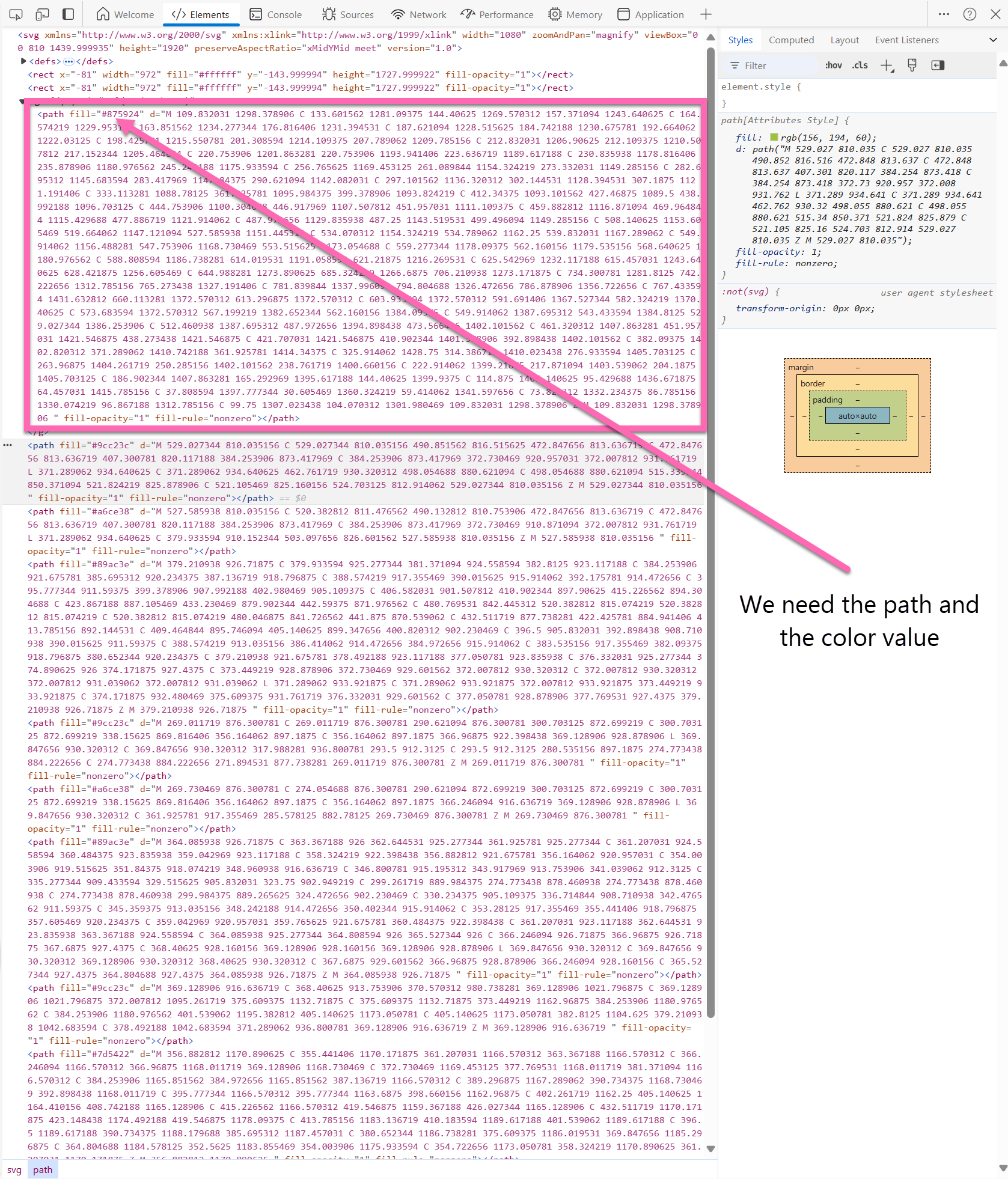Display SVGs with multiple paths in a SharePoint list
I had this neat idea that depending on a value in a number column, the field would show a plant - a very small one for value 1, and then increasingly growing with more leaves up to value 4. To get you an idea on how to achieve this, here is the end result:

The SVGs 🪴
What we need for that is of course four similar SVGs. This is how I did that:
- I found mine on Canva
- separated them into individual SVGs,
- downloaded the files
- opened them in Edge
- hit the F12 key on my keyborad to inspect them
- extracted all the paths
dandfill-colorvalues

The List
Now let’s head over to SharePoint and
- Create a number column in a list - mine is called Progress
- If you want to, you can limit values to from
1to4 - Select your field > Column settings > Format this column
- Select Advanced mode
- Delete the code in the box and paste the code you can find in this file (it’s nearly 800 lines, I will not make everyone scroll in here).
How the magic works
Let me explain what I did here:
I defined 4 svg elements, each of them carrying multiple paths of the SVG, being displayed under the condition of which value the field Progress shows. Each child item contains then a path with attributes: data (d) and a style with a fill property:
{
"elmType": "path",
"attributes": {
"d": "M 367.652344 905.644531 C 367.652344 905.644531 403.539062 879.605469 423.945312 855.675781 C 423.945312 855.675781 426.054688 856.378906 423.945312 859.898438 C 415.5 872.566406 390.871094 907.050781 371.871094 928.164062 C 371.167969 928.164062 366.242188 913.382812 367.652344 905.644531 Z M 367.652344 905.644531"
},
"style": {
"fill": "#9cc23c"
}
}
We need such a child item for each path of the SVG that we want to display. Then it is just a question of copy-pasting the data attribute and the color into the respective fields - Boom - done!
Conclusion
Takes a bit of perseverance, but the result is rather stunning!
You May Also Like
Intro to custom functions in Power Apps
tl;dr Custom functions are a great way to make code reusable in Power Apps. By also leveraging Power Apps component libraries we can use the same code across apps in the environment. Once there was a …
Microsoft Graph toolkit people-picker lookalike for Power Apps
tl:dr Microsoft Graph toolkit is a collection of reusable components for accessing and working with Microsoft Graph API - However, we can’t use them in Power Apps, which is why I started to …
How to build a Power Apps progress bar component
tl;dr Components are reusable building blocks in Power Apps which increase maker productivity and design consistency. If you are new to them, you should definitely start to learn how to build them - …





